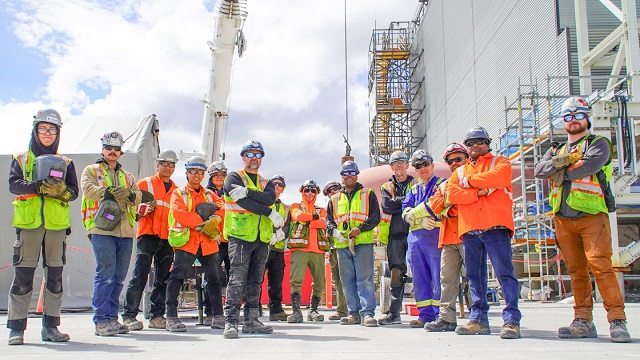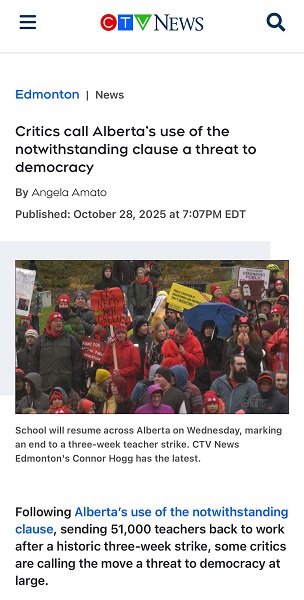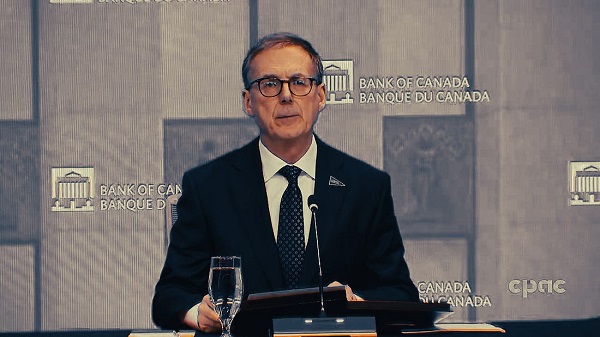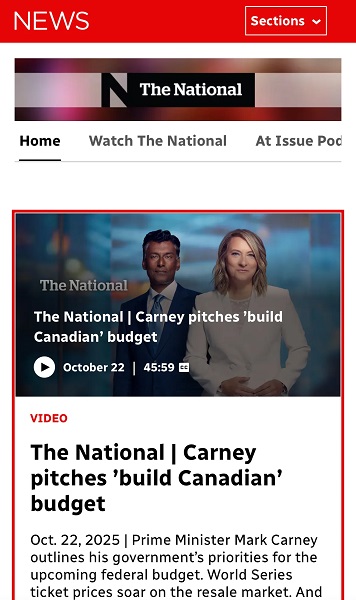Alberta
Any Downturn in Alberta’s Economy Would Inevitably Drag Canada’s Down With It

From the Frontier Centre for Public Policy
By Troy Media
Is anyone paying attention?
Canada is heading straight for an economic iceberg, and the rest of the country doesn’t seem to grasp the gravity of the situation. Alberta – long the engine of Canada’s prosperity thanks to its oil and gas sector – is facing a serious decline because the Trudeau government is obsessed with its net-zero policies. And if Alberta falters, the ripple effects will drag down the entire nation. But are we too preoccupied with federal climate targets to recognize the risks staring us in the face?
The Trudeau government’s push for net-zero emissions by 2050 may look noble on paper, but the real-world cost could be catastrophic. The numbers don’t lie: according to a recent column by Troy Media contributor Lennie Kaplan, Alberta’s oil production could drop by a staggering 54 percent by 2050. That’s not just a provincial problem; it’s a national economic emergency waiting to happen.
Let’s cut through the jargon. Alberta makes up about 15 percent of Canada’s GDP. If Alberta’s economy shrinks by $32 billion – as projected – it would trigger a 1.2 percent drop in Canada’s GDP. For context, that’s a multi-billion-dollar hole in a country whose economy is, itself, already in severe decline.
Does Ottawa think a shrinking economy will put us in a stronger position to innovate and grow? Or are they content with turning Alberta into a sacrificial lamb on the altar of climate policy, ignoring the fact that this will make Canada less competitive on the world stage?
Then there’s the job market. Alberta’s energy sector employs thousands and indirectly supports tens of thousands more across Canada. By 2050, again according to Kaplan, Alberta could shed 198,000 jobs – five percent of its workforce. These aren’t just oil rig workers; they’re engineers, construction crews, transport workers, and more.
It gets worse. When Alberta’s economy shrinks, industries from coast to coast that depend on Alberta’s vitality will also take a hit. If even 10 to 15 percent of those job losses trickle across the country, we’re looking at another 20,000 to 30,000 Canadians joining the unemployment line. Yet, where is the urgency to address this looming crisis?
Alberta isn’t just a provincial powerhouse – it’s also a major contributor to federal revenues. Between 2025 and 2050, the province’s contributions could drop by $221 billion due to declining oil and gas revenues. That’s less money for healthcare, infrastructure, and social programs from coast to coast.
For a federal government that already struggles to balance its books, the loss of up to $40 billion in federal tax contributions from Alberta is a fiscal disaster in the making. Where do they expect to make up that shortfall? Higher taxes? Slashed services? Or maybe another round of federal borrowing to kick the can down the road?
Alberta’s oil and gas isn’t just a provincial asset – it’s a critical part of Canada’s trade balance. In 2022, energy exports made up 20 percent of Canada’s total exports. Cut that by more than half, and you’re gutting Canada’s international trade position.
A $70 to 80 billion hit to export revenue could balloon the country’s trade deficit, further devaluing the Canadian dollar and making imports more expensive. In short, this isn’t just bad news for Alberta – it’s an economic calamity that could send shockwaves through every corner of the country.
And let’s not forget the federal equalization program. Alberta has long been a “have” province, contributing far more than it gets back. But if Alberta’s economy falters, it could soon be knocking on Ottawa’s door for handouts.
Imagine the political firestorm if Alberta becomes a “have-not” province, competing for federal support with the very provinces that have relied on its success. The strain on equalization could pit regions against each other, creating a toxic political environment when unity is more crucial than ever.
Does Ottawa even care?
Alberta’s decline isn’t just Alberta’s problem. It’s a Canadian problem. The Trudeau government’s climate obsession needs to take this into account. We cannot afford to sacrifice Alberta’s economic engine without dragging the rest of the country down with it.
What’s the plan to balance climate goals with economic reality? So far, there’s been little more than vague promises and short-term thinking. If Ottawa doesn’t wake up to the real-world consequences of Alberta’s decline, we’re all in for a harsh economic reckoning.
It’s time for our leaders to prioritize pragmatic solutions over virtue signalling. Because if Alberta goes down, the rest of Canada won’t be far behind.
First published here.
Troy Media is an editorial content provider to media outlets and its own hosted community news outlets across Canada.
Alberta
Province orders School Boards to gather data on class sizes and complexity by Nov 24

Better data, better outcomes for Alberta students |
To help schools address classroom complexity, Alberta’s government will begin collecting annual data on class size and composition.
Over the past three years, Alberta has welcomed more than 80,000 new students. With this unprecedented growth, classroom complexity and class sizes are among the biggest issues facing schools and teachers across the province.
To meet this challenge head on, Alberta’s government will work with school boards to gather yearly data on class sizes and composition. This information will be used to better understand staffing, student needs and classroom complexity. School boards will be required to submit data on Alberta classrooms by Nov. 24, and by January, this data will be made publicly available and will then be released annually.
Data collected on classroom complexity will help the province understand and address issues in schools, including class sizes, and support strategic investments in classrooms. Over the next three years, school boards will be provided with funding to hire 3,000 teachers and 1,500 new education assistants to support students with complex needs.
“We are ready to work with school boards and teachers to address classroom complexity and class sizes. We have heard them loud and clear and we are taking bold action to address these issues.”
Alberta’s government is establishing a Class Size and Complexity Task Force to begin work immediately on identifying solutions to the challenges facing Alberta classrooms. Alongside new annual data collection, the task force will ensure every student gets the attention and support they need to succeed. Details about the task force will be shared in the coming weeks.
“This data will provide essential insight into classroom realities, guiding evidence-based decisions and advocating for sustainable funding to address complexity, ensuring every student and educator in Alberta has the support to thrive.”
Quick facts
To inform decisions on addressing classroom complexity, data will be collected on total numbers of:
- all staff, per school, including roles
- substitute teachers
- district staff, listed by job title
- students, per classroom, per school
- severe, mild/moderate, and gifted/talented students, per classroom, per school
- English as an additional language (EAL) students, per classroom, per school
- refugee students, per classroom, per school
- First Nations, Métis and Inuit students, per classroom, per school
- Individualized Program Plans, per classroom, per school
- students waitlisted for assessment, per classroom, per school
- incidents of aggression and violence
- $55 million was provided in Budget 2025 to address classroom complexity.
- 8.6 billion is being invested to build and renovate more than 130 schools across the province.
- Budget 2025 is investing $1.6 billion in learning support funding to help meet students’ specialized learning needs.
- Budget 2025 is investing $1.1 billion to hire more than 4,000 teachers and educational staff.
Alberta
How one major media torqued its coverage – in the take no prisoners words of a former Alberta premier

(Editor’s note: I was going to write on the media’s handling of the Alberta government’s decision to order striking teachers back to work and invoke Section 33 of the Charter in doing so. But former Alberta premier Jason Kenney provided such a fulsome dissection of an absence of balance and its consequences in terms of public trust on X that I asked him if The Rewrite could publish it. He said yes and here it is – Peter Menzies.)
By Jason Kenney
This ”story” is an object lesson for why trust in legacy media has plummeted, and alt right media audiences have grown.
”story” is an object lesson for why trust in legacy media has plummeted, and alt right media audiences have grown.
Here CTV “digital news producer” @AngeMAmato (she/her) writes a story about “experts” calling the use of Sec. 33 “a threat to democracy.”
Who are the experts?
A left wing academic, and a left wing activist. The latter, Howard Sapers, is a former Liberal MLA (which the article does not mention) for a party that is so marginal, it has not elected an MLA in over a decade.
For good measure CTV goes on to quote two left wing union bosses, who of course are predictably outraged.
A more accurate headline would be “Four people on the left angry about use of Notwithstanding Clause.” Which is the opposite of news. It’s the ultimate “Dog Bites Man” non-story.
Did the CTV producer make any effort to post a balanced story by asking for comment from academics / lawyers / think tanks who support use of Sec. 33? Did she call the @CDNConstFound or the @MLInstitute’s Judicial Power Project? Did she attempt to reach any of these four scholars, who just published their views in a @nationalpost op-ed last week?
Did she have an editor who asked why her story lacked any attempt at balance?
And did anyone at CTV pause for a moment to ponder how tendentious it is to accuse a democratically elected legislature of acting “undemocratically” by invoking a power whose entire purpose is to ensure democratic accountability?
She provides some historical context about prior use of Sec. 33. Why does that context not include the fact that most democratically elected provincial governments (including Alberta under Premier Lougheed, and Saskatchewan under NDP Premier Blakeney) agreed to adopt the Charter *only if* it included the Notwithstanding Clause to allow democratically elected Legislatures to ensure a democratic check and balance against the abuse of undemocratic, unaccountable judicial power?
Why does she not mention that for the first 33 years of the Charter era, the Canadian Courts ruled that there was no constitutionally protected right to strike?
Why doesn’t she quote an expert pointing out that Allan Blakeney defended the Saskatchewan Legislature’s 1986 use of Sec. 33 to end a strike as “a legitimate use of the Clause?” Or refer to Peter Lougheed’s 1987 commitment to use Sec. 33 if the courts invented a right to strike?
Many thoughtful criticisms can be levelled against Section 33. Being undemocratic is not one of them.
So why do we see so much agitprop like this masquerading as news from so many legacy media outlets?
IMO, there are two possible answers:
1) They are blind to their own biases; and / or
2) People like @AngeMAmato believe that they have a moral imperative to be “progressive journalists” which trumps the boringly old fashioned professional imperative to be objective and balanced.
Whatever the reason, “journalists” like this have no one to blame but themselves for growing distrust of legacy media, and the consequent emergence of non traditional media platforms.
 |
|
Invite your friends and earn rewards
-

 Business2 days ago
Business2 days agoCanada heading into economic turbulence: The USMCA is finished and Canadian elbows may have started the real fight
-

 National2 days ago
National2 days agoCanadian MPs order ethics investigation into Mark Carney’s corporate interests
-

 National2 days ago
National2 days agoCanada’s NDP is now calling women ‘non-males’
-

 Banks2 days ago
Banks2 days agoBank of Canada Cuts Rates to 2.25%, Warns of Structural Economic Damage
-

 Business2 days ago
Business2 days agoFord’s Liquor War Trades Economic Freedom For Political Theatre
-

 Health2 days ago
Health2 days agoLeslyn Lewis urges Canadians to fight WHO pandemic treaty before it’s legally binding
-

 MxM News1 day ago
MxM News1 day agoTrump ‘Grateful’ For Bill Gates Pivot, Declares Victory Over ‘Climate Change Hoax’
-

 Alberta1 day ago
Alberta1 day agoNobel Prize nods to Alberta innovation in carbon capture







